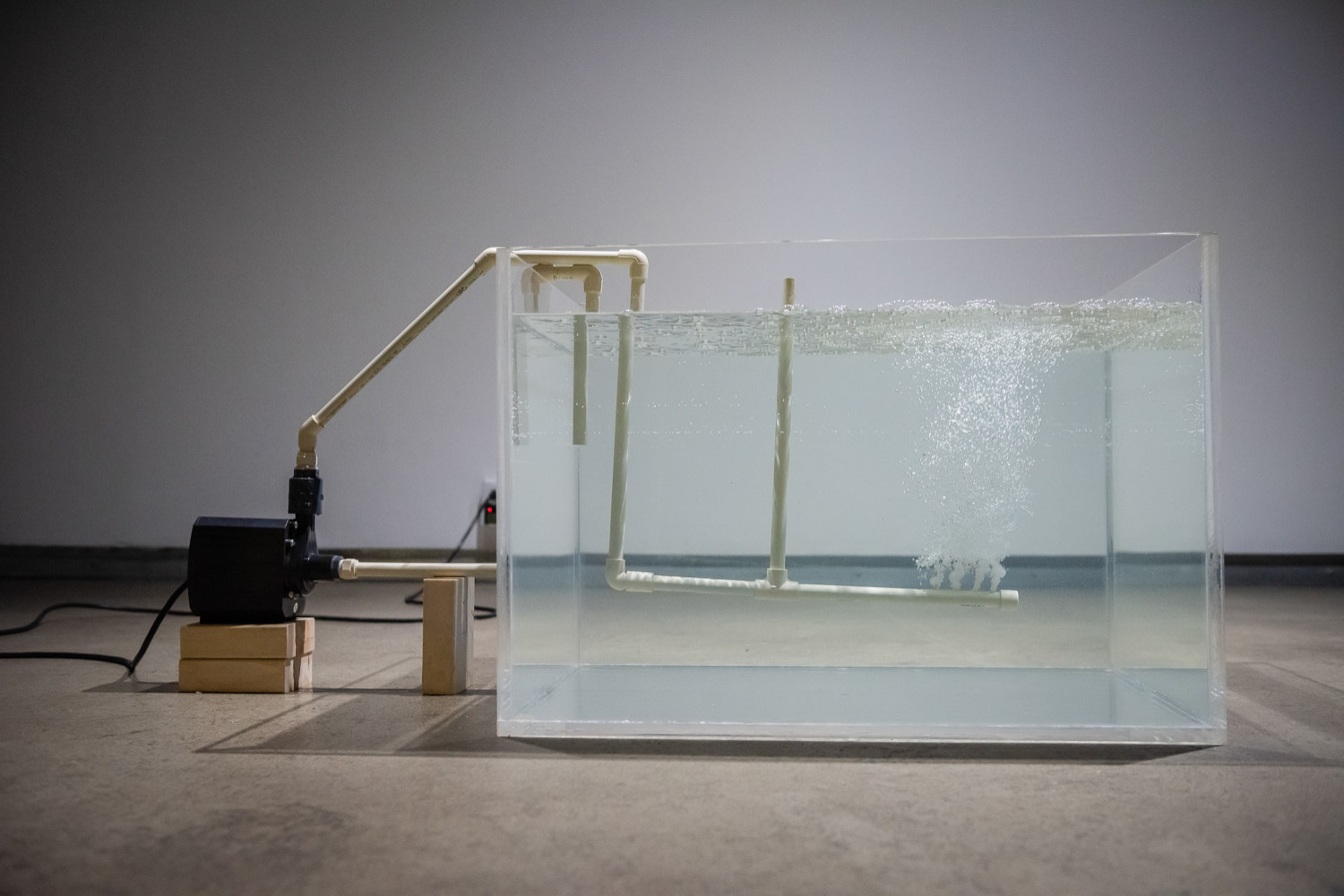

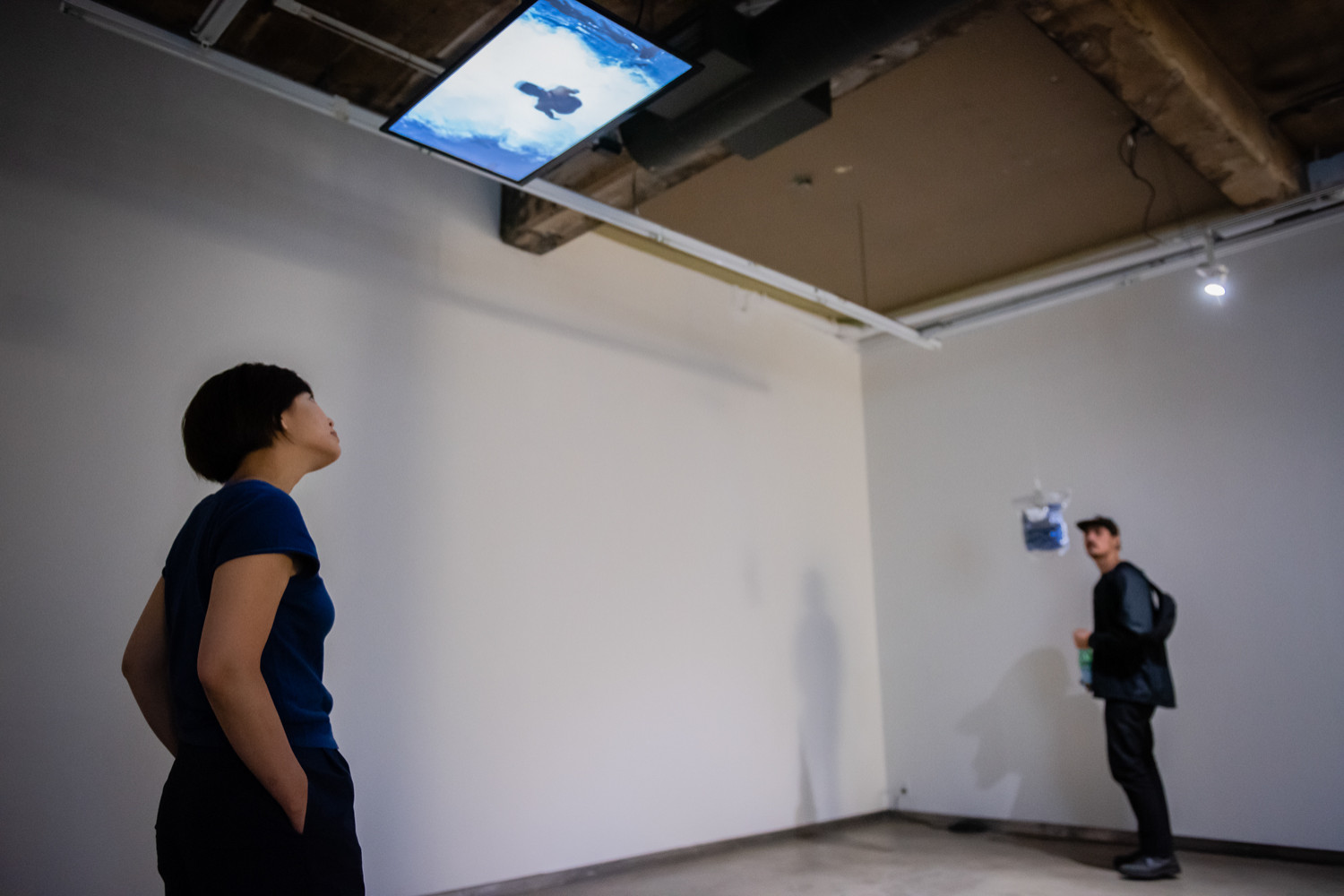
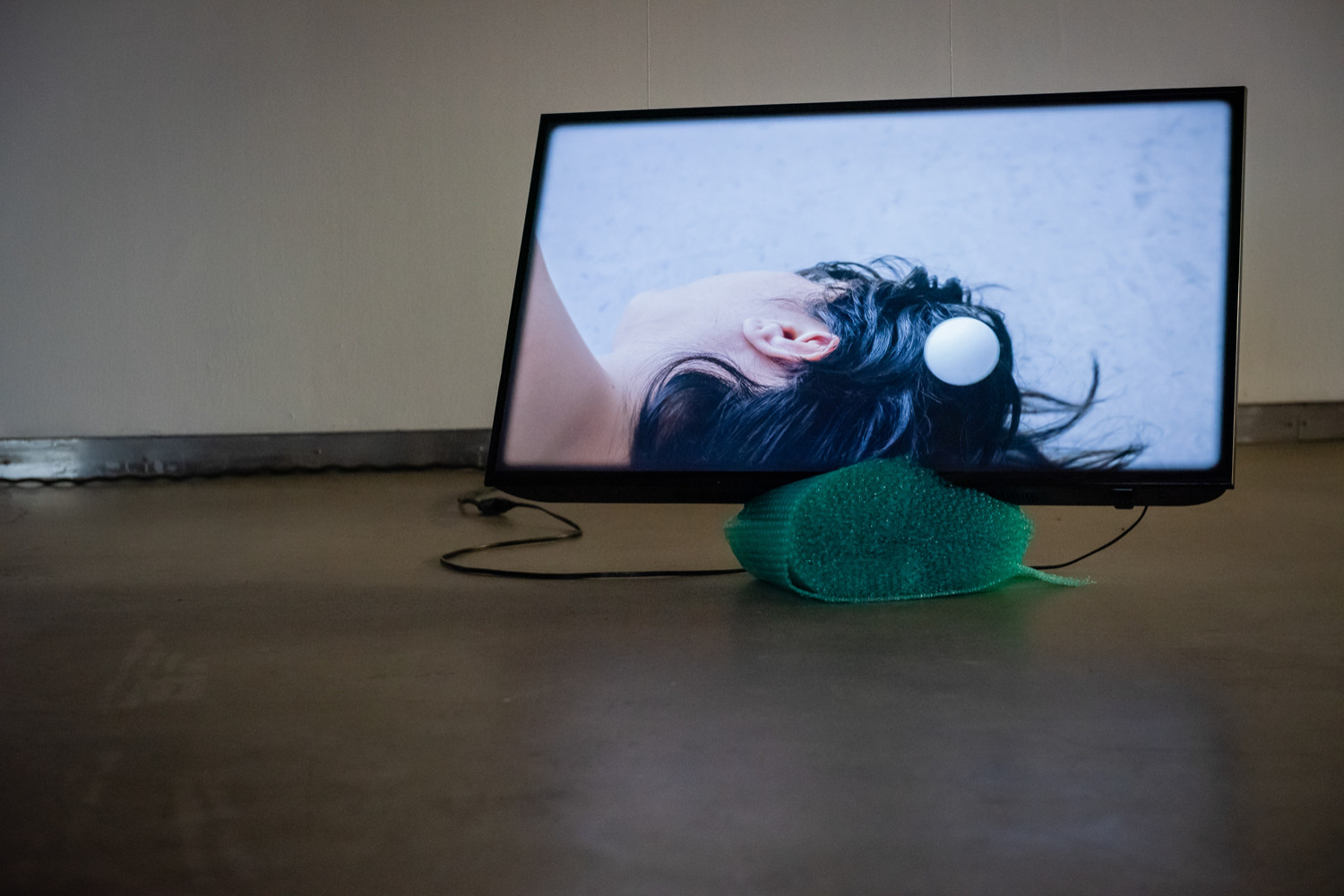
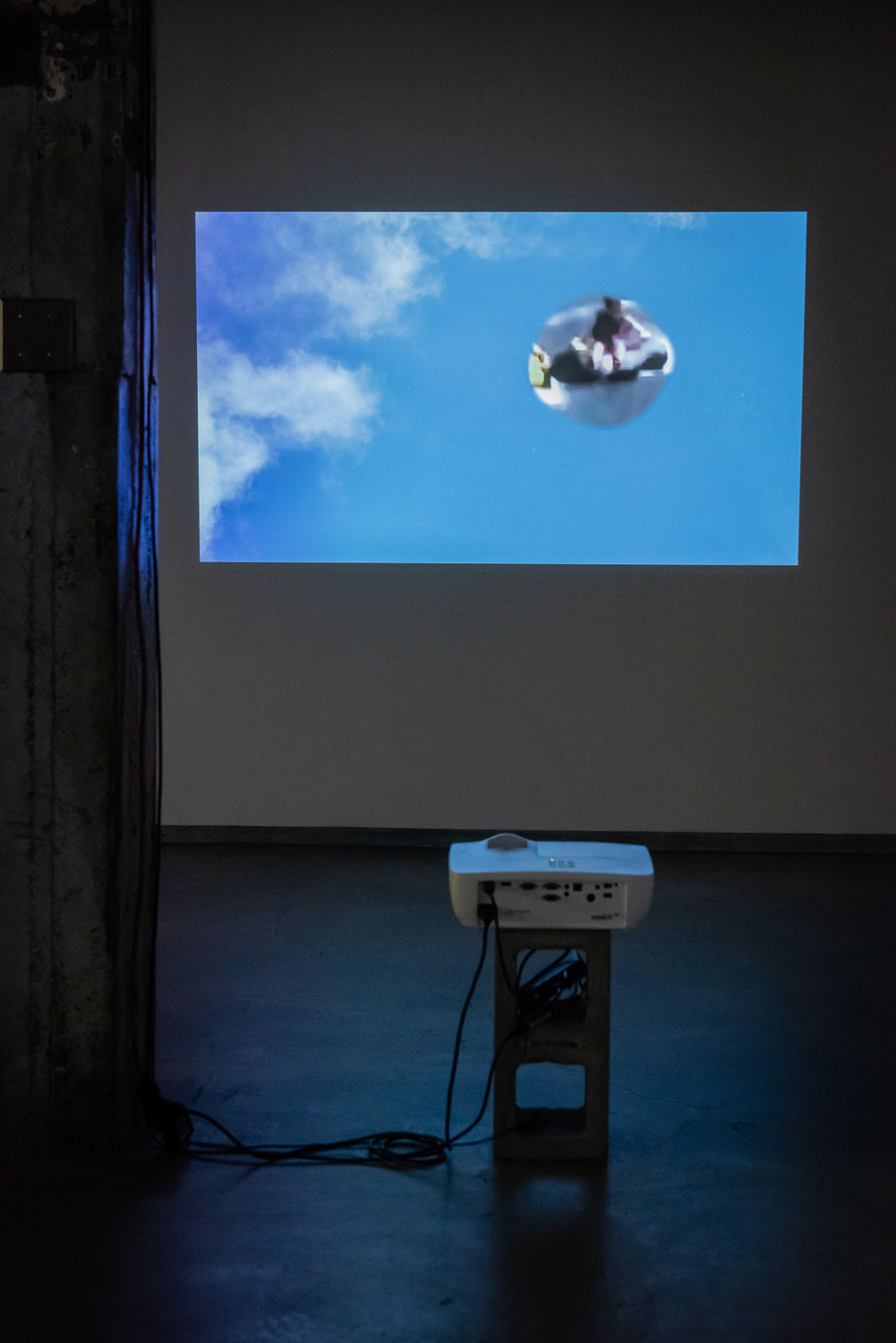
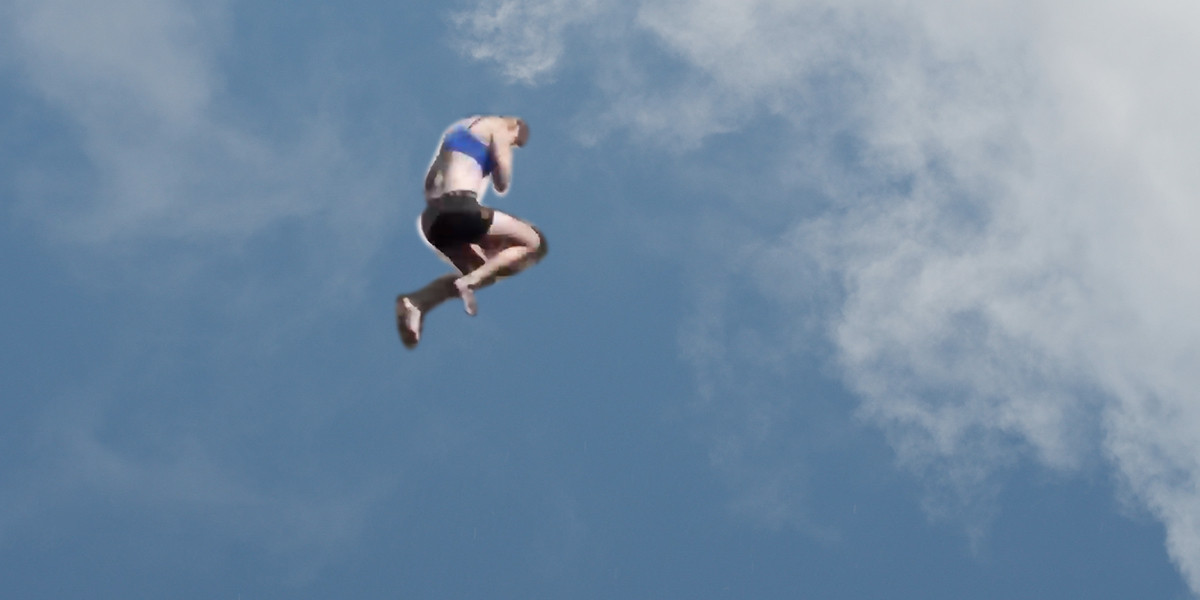
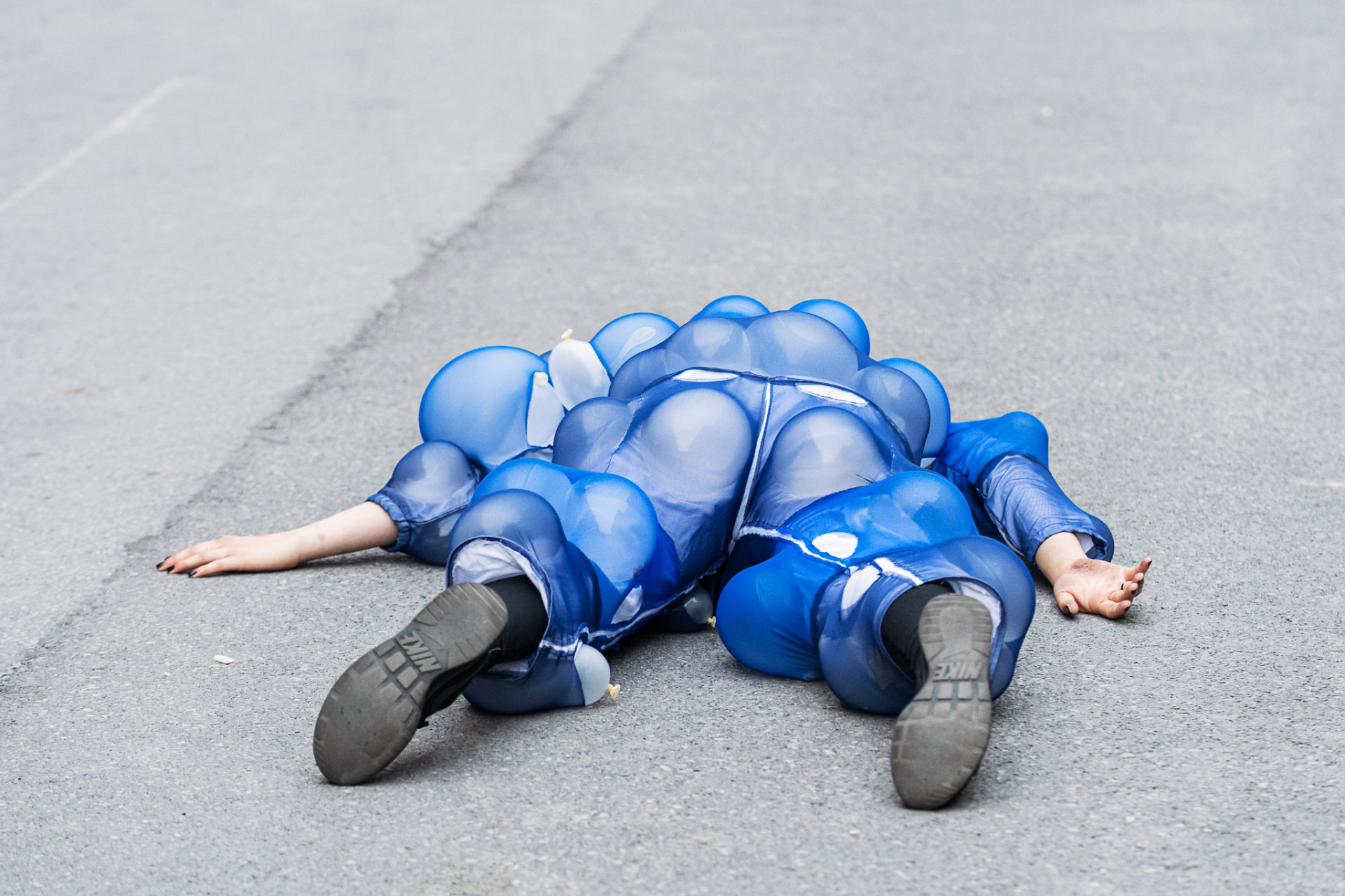
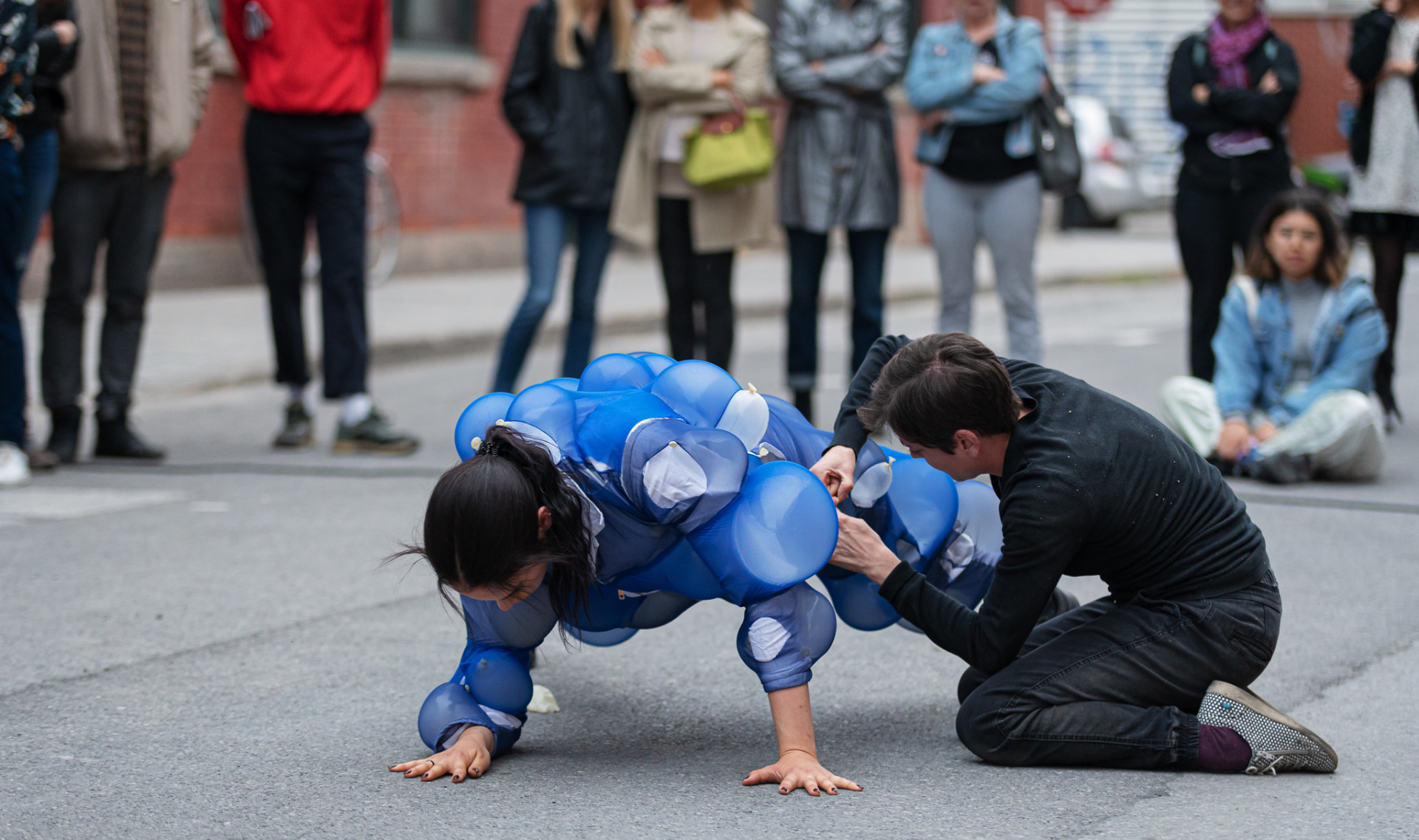
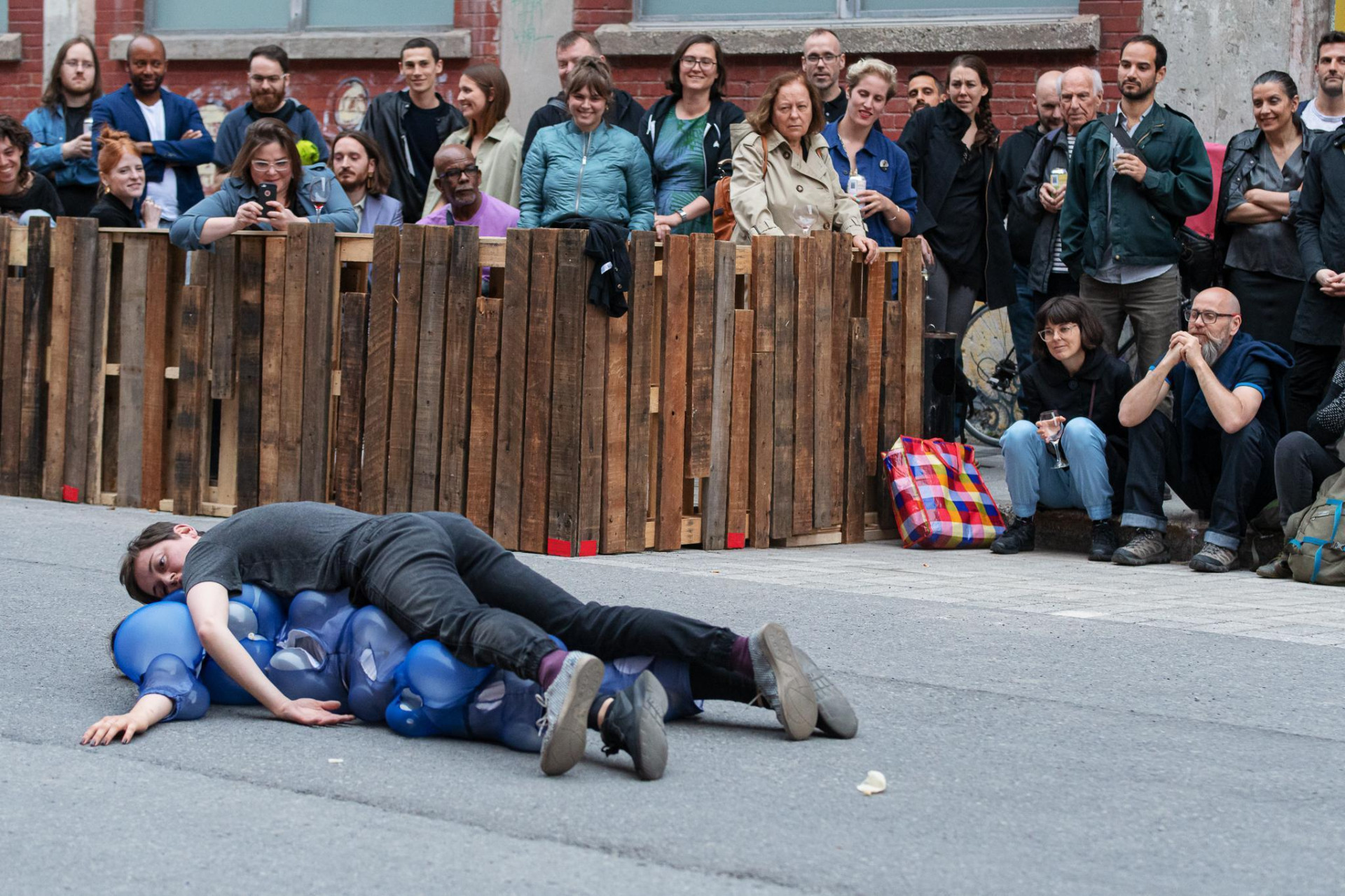
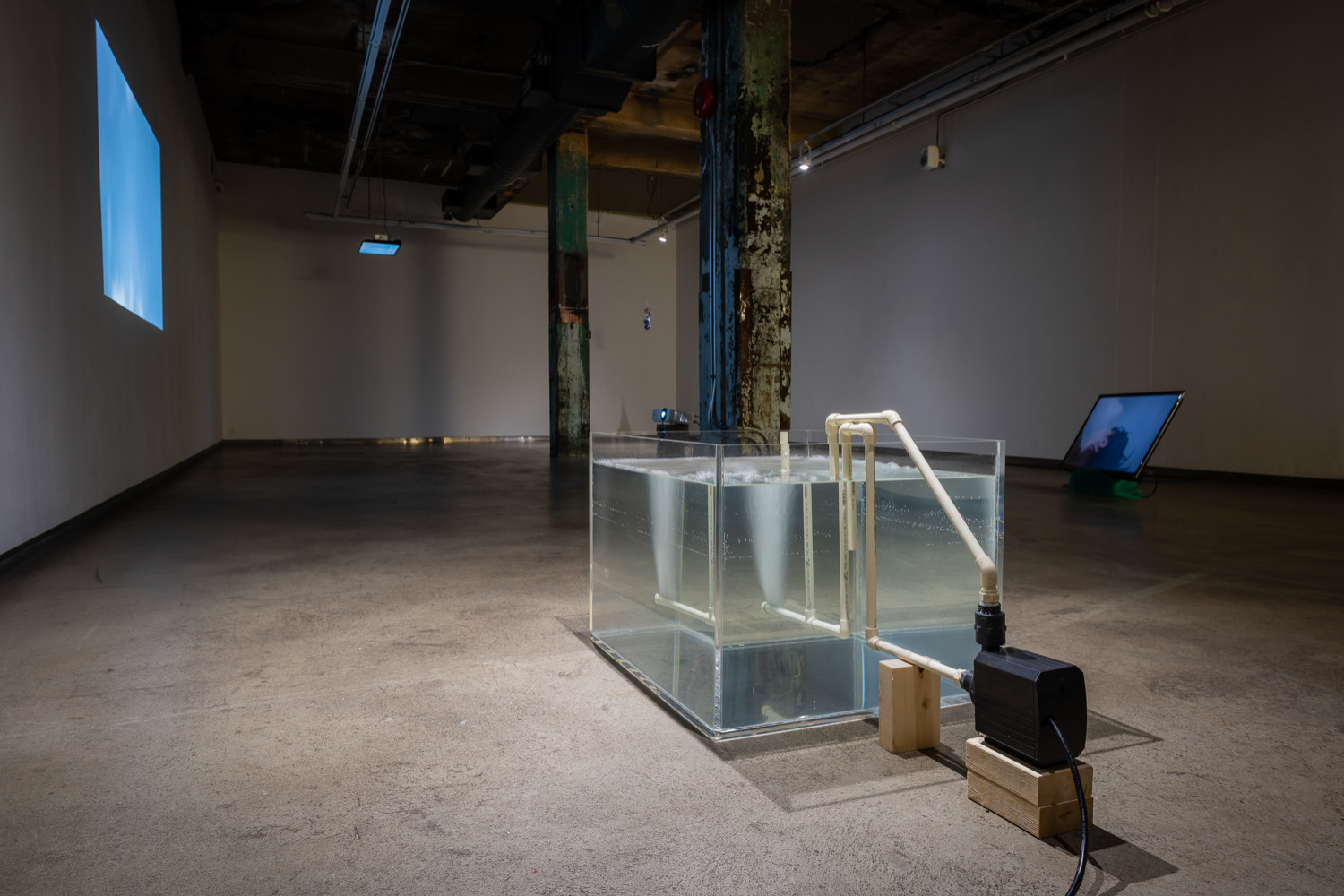

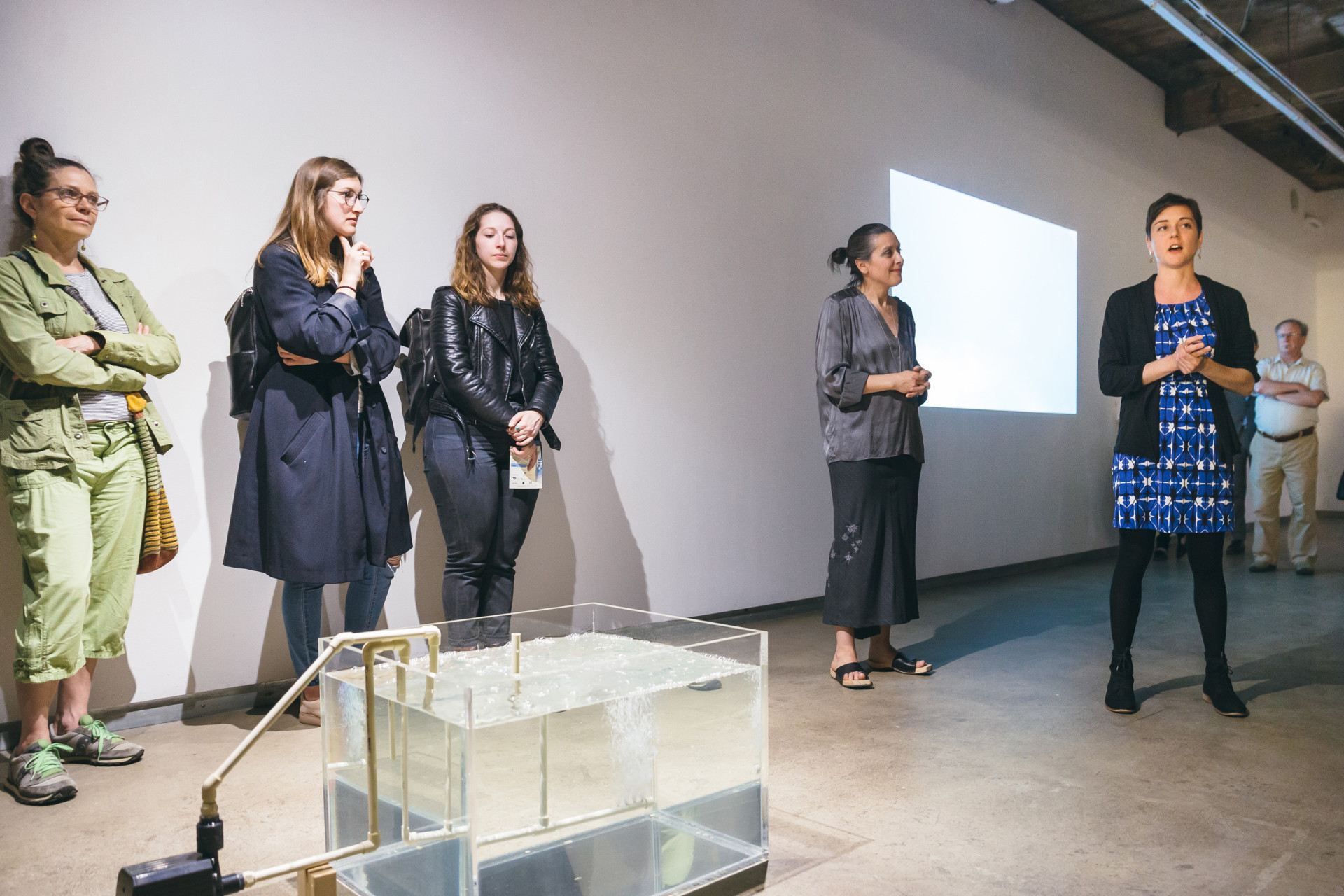
Pascale Théorêt-Groulx explores the dichotomy between science and the human being, between the scholarly, irrevocable, and theoretical aspects of one and the clumsy, affective, and perceptible aspects of the other. Through installations, sculptures, and videos—works that seem light and humorous, yet are also introspective—the artist tackles the sometimes-stark contrast between these two worlds.
For example, the sculpture Machine à bulles, a Plexiglas box full of water that holds a hose connected to a pump for making air bubbles, is a miniature reproduction of a machine that some aquatic centres use to reduce the surface tension of water for divers. The installation makes one smile by suggesting a missed dive and evoking the athlete’s unintentional clumsiness. Similarly, a monitor is suspended from the ceiling and forces the viewer's gaze upwards. The video surprises by its play on inversion: a repeted jump in a swirl of bubbles. Also, the highly unlikely astronaut suit saddled with pockets filled with air, which a dancer wears for a performance at the exhibition opening, seems to defy the laws of gravity and the limits of DIY. The video Monter en bas also challenges gravity. Against a background of blue sky and slowly passing clouds, vignettes appear, intermittently projected into the space like subliminal images or hallucinations. In these flashes, mysterious actions, unidentified objects, exclamations, and laughter surreptitiously emerge and resonate. To emphasize the phenomenon’s fragility, the projector has been precariously set on a concrete structure, on the borderline of instability. This construction is as unstable as the one framing the video À Perpétuité. In this case, the screen has been suspended by two cables and placed on a roll of bubble wrap in such as way so that it tilts back. The video presents a close-up of a woman’s head lying on the ground and seen from the back. Ping pong balls, which are sometimes held in suspension and sometimes fall and roll over her, come in quick succession to give this uncertain action a certain rhythm.
Through propositions that light-heartedly challenge both aesthetic codes and the laws of physics, Théorêt-Groulx seeks to reveal the gap between scientific truth and the sensory world, between the scholarly and the profane.
Caroline Andrieux
Translated by Oana Avasilichioaei
• • •
To Be Worn in an Emergency
A text written by the artist for her performance on June 13, 2019.
Beyond our protective atmosphere, the human body is subjected to innumerable factors that affect the vital functions. Loss of consciousness, bubbling bodily fluids, and sunburn are just some of the problems to expect if one is unexpectedly propelled into space. Our body is definitely not made to survive outside of the troposphere, yet the lack of oxygen, depressurization, direct exposure to UV rays, and extreme temperatures have not discouraged our species. Since 1961, more than 560 astronauts have been sent into space.
This has also not discouraged Cameron Smith, an American researcher at Portland State University, who has been working on designing an inexpensive DIY spacesuit for the last ten years. In the face of intense competition, his goal is a production cost of $1000: NASA spends some $12 million per spacesuit. $12 million to keep a single body alive in space.
Clearly, we have developed the technology to keep our little bodies alive in extraterrestrial conditions, but what about the conditions of our planet? I have designed, with the valued collaboration of Marie-Ève Chagnon, an inexpensive, handmade pressure suit to be used in case of a cataclysmic event. As the title indicates, the suit should only be worn in an emergency.
On June 13, this emergency will become apparent. The suit will be worn and tested to the end. The end of what? Simply, to the end.
Pascale Théorêt-Groulx
Translated by Oana Avasilichioaei
• • •
The artist would like to thank Mainfilm et Oboro, Ileana Hernandez Camacho, Marie-Ève Chagnon, Mathilde Mercier-Beloin and the Centre aquatique de Pointe-Claire for their precious contribution.
Pascale Théorêt-Groulx
Pascale Théorêt-Groulx holds a master's degree in media arts from the Emily Carr University in Vancouver, for which she received a grant from the Social Sciences and Humanities Research of Canada. She recently participated in two artist residencies at the Banff Centre in Alberta, and at DAÏMÔN in Gatineau.
Curator
Caroline Andrieux
